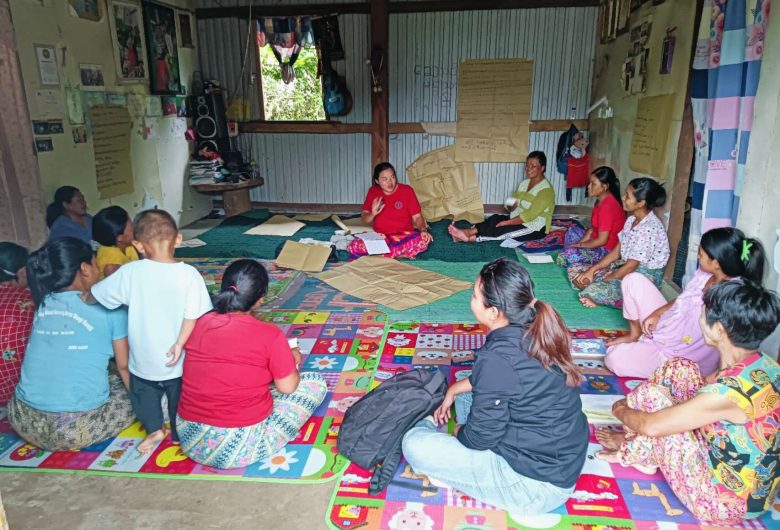Welcome to the Freedom Fund’s monthly bulletin designed to bring you new and compelling research from the global anti-slavery movement.
The 2024 global estimates of child labour
The ILO and UNICEF report on the prevalence of child labour, based on survey data from 107 countries. The report estimates that nearly 138 million children are engaged in child labour, a 14% decrease compared to the 2020 estimate. Sub-Saharan Africa makes up the largest share of the global total (87 million), followed by Central and Southern Asia (17 million). Among all child labour, 54 million perform hazardous work — from handling dangerous tools to being exposed to extreme temperatures. Globally, nearly one-third of school-age children are in child labour, highlighting barriers to school attendance and the need to scale up evidence-based actions.
Boys living and working on the streets in Dhaka risk child labour and trafficking
Population Council and INCIDIN Bangladesh, with the support of the Freedom Fund, offer insights into the lives of street-connected boys in Dhaka, Bangladesh. The study surveyed 883 boys aged 12 to 17 years, living and working on the streets, and found that 63% had not completed primary-level education and 97% were working for money or in exchange for food, shelter or favours. Additionally, 19% reported drug use, 15.4% reported sleeping in unsafe locations and 4% had experienced commercial sexual exploitation. The study commends collaboration between policymakers, law enforcement agencies, and civil society organisations to support street-connected boys.
Promising link between institutional support for freedom of association and wages
Cornell University examines wages paid to supply chain workers in six major apparel-producing countries — Bangladesh, China, India, Indonesia, Mexico and Vietnam — which together accounted for 50.43% of global garment exports. While most global bands that source from these countries have codes of conduct promising a living wage to workers, data from 9,231 factory audits show that in practice they set wages slightly above legal minimums, insufficient to cover the cost of living. The study suggests that voluntary corporate initiatives alone are inadequate and achieving living wages will require stronger state action, including higher minimum wages and protecting workers’ right to engage in collective bargaining.
Mineral supply chains risk participating in forced labour programs in Uyghur region
Global Rights Compliance spotlights global reliance on four critical minerals with significant mining and processing in the Xinjiang Uyghur Autonomous Region (XUAR): titanium, lithium, beryllium and magnesium. This reliance is undermining efforts to eliminate forced labour from global supply chains. By analysing publicly available data sources, including corporate annual reports, the study traces supply chains of titanium (11% of global production), lithium (56%), beryllium (22%) and magnesium (92%) linked to XUAR. The findings uncover 77 Chinese companies sourcing directly from XUAR and 68 foreign brands who buy from them, highlighting the need for robust supply chain mapping and targeted import bans.
Relying on adult reports may lead to inaccurate estimates of child labour
A joint study by Stanford University and the University of Pennsylvania finds that relying on adult reports may mischaracterise child labour trends. Using data from 2,243 school children in cocoa-producing regions of Côte d’Ivoire, their teachers and parents, and an independent certifier, the study found major reporting gaps between the three groups. While children and the independent certifier reported similar child labour rates (45% and 48% respectively), only 16% of parents admitted their child was working – a figure that is 60% lower. These findings suggest that child labour statistics based on ILO methodology may underestimate prevalence, and should be supplemented with direct inputs from children or other observational methods.
Read on
An external evaluation of The Freedom Fund’s program, supporting child domestic workers in Ethiopia, shows improved access to education and more dignified living conditions.
Equidem investigates the consequences of prolonged exposure to violent and abusive content on data workers, content moderators and data labellers.
A study led by Harvard University reviews the effects of racial and ethnic discrimination on the healthcare of survivors in the United States.
Freedom Fund news
In a recent article for the Center for Effective Philanthropy, Nick Grono, CEO of the Freedom Fund, outlines pathways to launching and scaling a collaborative fund.
Visit our Newsroom for more updates.
Research library
Visit our Slavery Research Library to access anti-slavery resources from across the globe.
Contact
The Slavery Research Bulletin is produced monthly by the Freedom Fund, a global fund with the sole aim of helping end modern slavery.
Research being featured in this bulletin does not equal endorsement by the Freedom Fund.
Click here to sign up to the Slavery Research Bulletin mailing list.
Photo credit: Armin Hari/The Freedom Fund



